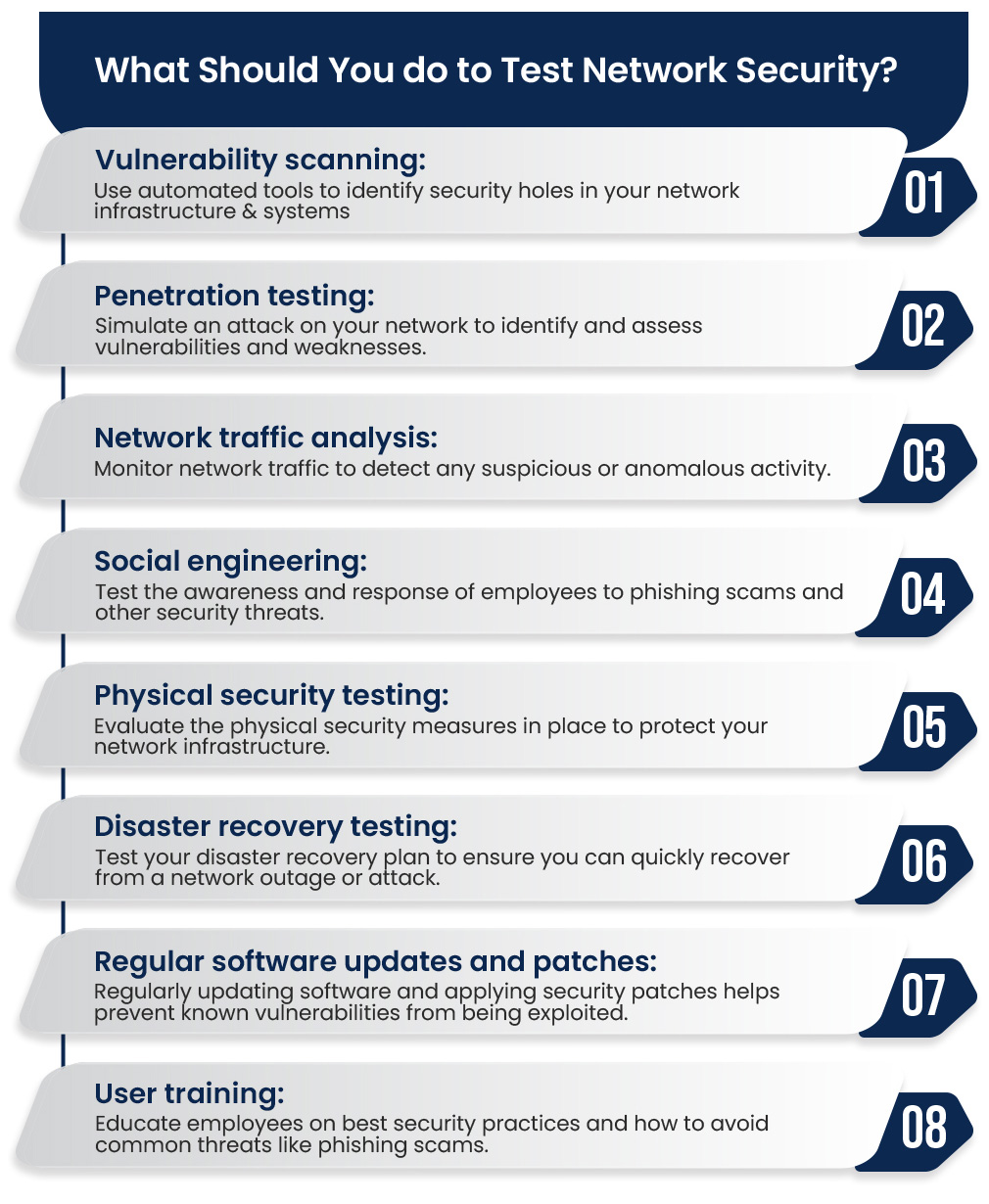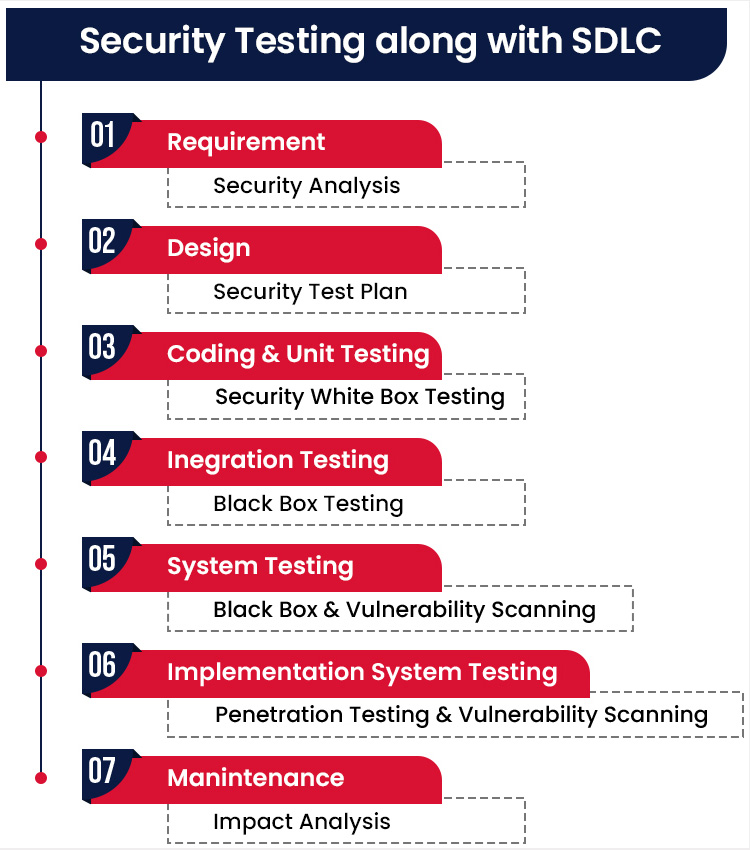How confident are you that your security measures for the network are sufficient to prevent cyberattacks? Do you require regular testing of your network security? I believe you do, since hackers are very motivated and you may have information, they would like to have — customer information, credit card information, anything of value.
Globally, mobile phones and the internet are being adopted at an exponential rate. Developed nations are no longer the only ones affected by this phenomenon, as it has begun to spread to developing nations as well. For example, in India, where it is estimated that mobile internet users will reach 1.5 billion by 2040.
Nevertheless, when browsing the internet, consumers should keep in mind the old adage ‘With great power comes great responsibility.’ It is because cyber-attacks, data breaches, and other similar incidents are increasing every year. Even experienced internet users fall prey to cyber-attacks!
According to IBM’s 2024 reports, cyber-attacks account for nearly 90 percent of data breaches. Enterprises whose apps (or websites) are used by their customers also have a role to play in minimizing the possibility of data breaches and cyber-attacks.
Enterprises can use security testing to improve the robustness and security of their products from the perspective of their customers. Throughout this blog, we will discuss the integral aspects of Network Security Testing and also take a deeper look at Network Vulnerability Assessment (which is also part of the security testing process).
“The global network security market is projected to grow from USD 22.60 billion in 2022 to USD 53.11 billion by 2029, at a CAGR of 13.0%”
What is Network Security Testing?
Network security testing refers to the process of evaluating the security measures in place to protect a network infrastructure from unauthorized access, theft, damage, or other security threats. This can involve using various tools and techniques to identify vulnerabilities, simulate attacks, and assess the overall security posture of a network. The goal of network security testing is to identify weaknesses and potential security risks in order to improve the overall security of the network and prevent breaches.
Common Network Security Testing Methods

- Vulnerability Scanning: Detects known weaknesses in systems and software.
- Penetration Testing: Simulates real-world cyberattacks to uncover exploitable vulnerabilities.
- Network Traffic Analysis: Monitors and analyzes data flow to identify suspicious behavior.
- Social Engineering Tests: Evaluates human vulnerability through phishing or baiting.
- Disaster Recovery Testing: Ensures your systems can recover quickly after an attack.

What Is a Network Vulnerability Assessment?
A network vulnerability assessment is a structured process that identifies, evaluates, and prioritizes vulnerabilities within your network.
Before investing in new security tools, conducting a risk-based vulnerability assessment helps quantify potential losses and focus efforts where they matter most.
8 Steps To Performing A Network Vulnerability Assessment
- Conduct Risk Identification and Analysis Identify all assets that are a part of an information system in a company. With a complete list of all IT equipment, companies can start assigning risks to each asset to account for most situations that may arise.
- Develop Vulnerability Scanning Policies The policy or a procedure should have an official owner who is responsible for everything that is written inside. The policy should also be approved by upper management before taking effect.
- Identify the Type of Scans Depending on the software that is running on the system you need to scan and secure, you need to determine the type of scan to be performed in order to get the most benefit. Types of scans include network, host based, wireless based, and applications.
- Configure the Scan To configure a vulnerability scan you must: add a list of target IPs, define port ranges and protocols, define the targets, and set up the aggressiveness of the scan, time, and notifications.
- Perform the Scan The scanning tool will fingerprint the specified targets to gather basic information about them. With this information, the tool will proceed to enumerate the targets and gather more detailed specifications such as ports and services that are up and running.
- Evaluate and Consider Possible Risks Risks associated with performing a vulnerability scan pertain mostly to the availability of the target system. If the links and connections cannot handle the traffic load generated by the scan, the remote target can shut down and become unavailable.
- Interpret the Scan Results If there is a public exploit available for a vulnerability that you found in your system, giving priority to that vulnerability should take precedence over other vulnerabilities found that are exploitable but with far more effort.
- Create A Remediation & Mitigation Plan Information security staff should prioritize the mitigation of each vulnerability. The Information security staff and IT staff need to communicate and work closely together in the vulnerability mitigation phase in order to streamline the resolution process.
To assess your network security vulnerabilities
Top 5 Security Testing Methodologies
Different frameworks guide how security testing should be conducted. Here are the most recognized methodologies:
OWASP Testing Methodology: A comprehensive and structured approach to penetration testing developed by the Open Web Application Security Project (OWASP). It consists of a series of steps that are designed to test an application’s security posture and identify potential vulnerabilities. This includes testing for authentication, authorization, input validation, encryption, and other security controls.
PTES (Penetration Testing Execution Standard): A comprehensive standard for performing and reporting on penetration tests. PTES helps to ensure that the penetration testing process is conducted in a standardized way, making sure the security posture of the application is tested thoroughly. The standard includes steps to test authentication, authorization, input validation, encryption, and other security controls, enabling security teams to identify any potential vulnerabilities that could be exploited by an attacker.
NIST SP 800-115: A publication by the National Institute of Standards and Technology (NIST) that provides guidelines for conducting penetration tests. These guidelines provide an overview of the process, from setting up the test environment to analyzing the results, that organizations should follow when conducting a penetration test. It also outlines the responsibilities for both the test team and the organization being tested.
OSSTMM (Open Source Security Testing Methodology Manual): A methodology for performing security testing that emphasizes hands-on, practical testing techniques. OSSTMM is a holistic approach to security testing that looks at the entire infrastructure, from network security to system security, and identifies potential vulnerabilities. It is focused on finding vulnerabilities that attackers could use to gain access to sensitive information or disrupt services.
ISSAF (Information Systems Security Assessment Framework): A methodology for performing and evaluating security assessments, including penetration testing. ISSAF provides a comprehensive set of security assessment activities and guidelines for security professionals to identify, document, and assess security vulnerabilities in an organization’s information systems and networks. It also provides guidance on how to effectively mitigate identified security vulnerabilities and develop an effective security posture.
Best Network Security Testing Tools in 2025
- Wireshark: A network protocol analyzer that can be used to monitor network traffic and identify security issues.
- Nessus: A vulnerability scanner that can identify security vulnerabilities in networks and systems.
- Nmap: A network exploration and security auditing tool that can be used to map networks and identify open ports.
- Snort: An open-source network intrusion detection system (IDS) that can detect and prevent network attacks.
- Aircrack-ng: A suite of tools for wireless network security testing, including packet capture and analysis, WEP and WPA cracking, and more.
- Metasploit: An open-source framework for developing and executing exploits against vulnerable systems.
- Sysinternals suite: Collection of system utilities that can be used to troubleshoot and secure windows-based systems.
Note: The specific tools to be used would depend on the specific requirements and security challenges faced by the network.
Putting your network through a security test is essential. – WHY?
Network security testing is an important aspect of overall security for any organization that relies on a network to store, process, and transmit sensitive information. Network security testing helps to identify any potential vulnerabilities or weaknesses in the network, allowing the organization to take steps to mitigate and prevent security threats, such as unauthorized access or data breaches. It also helps to ensure that the network is able to handle expected levels of traffic and protect against any malicious attacks. Here are the details on why network security testing is crucial:
Protect against evolving threats: The threat landscape is constantly evolving, with new vulnerabilities and attack methods emerging all the time. Network security testing helps to identify these threats and assess the risk they pose to the network.
Ensure compliance: Many industries, such as finance, healthcare, and government, are subject to regulations that require regular security testing to ensure the protection of sensitive information. Regular testing helps organizations to maintain compliance with these regulations.
Ensure business continuity: Network security is critical to the availability and reliability of a network, which is essential for business continuity. Network security testing helps to identify potential risks and threats that could impact the network’s performance, enabling organizations to take proactive measures to mitigate these risks.
Detect security incidents early: Early detection of security incidents is crucial in reducing the impact and cost of a breach. Network security testing helps to identify security incidents early, allowing organizations to respond quickly and effectively.
Improve security posture: Network security testing provides organizations with insights into their security posture, enabling them to identify areas where they can improve their security measures. This can include updating software, strengthening authentication and access controls, and improving network design and architecture.
How Enhops can help for Network Security Testing
Enhops Network Security Testing provides you with the ability to explore exploratory risks and test business logic, thereby enabling you to find and eliminate business-critical vulnerabilities in running web applications and web services.
Utilizing a variety of testing tools as well as manual testing, we are able to find vulnerabilities outside of a canned list of attacks (e.g., OWASP Top 10). Depending on the risk profile of each test application, we offer multiple levels of vulnerability assessment, penetration testing, or continuous network monitoring.




